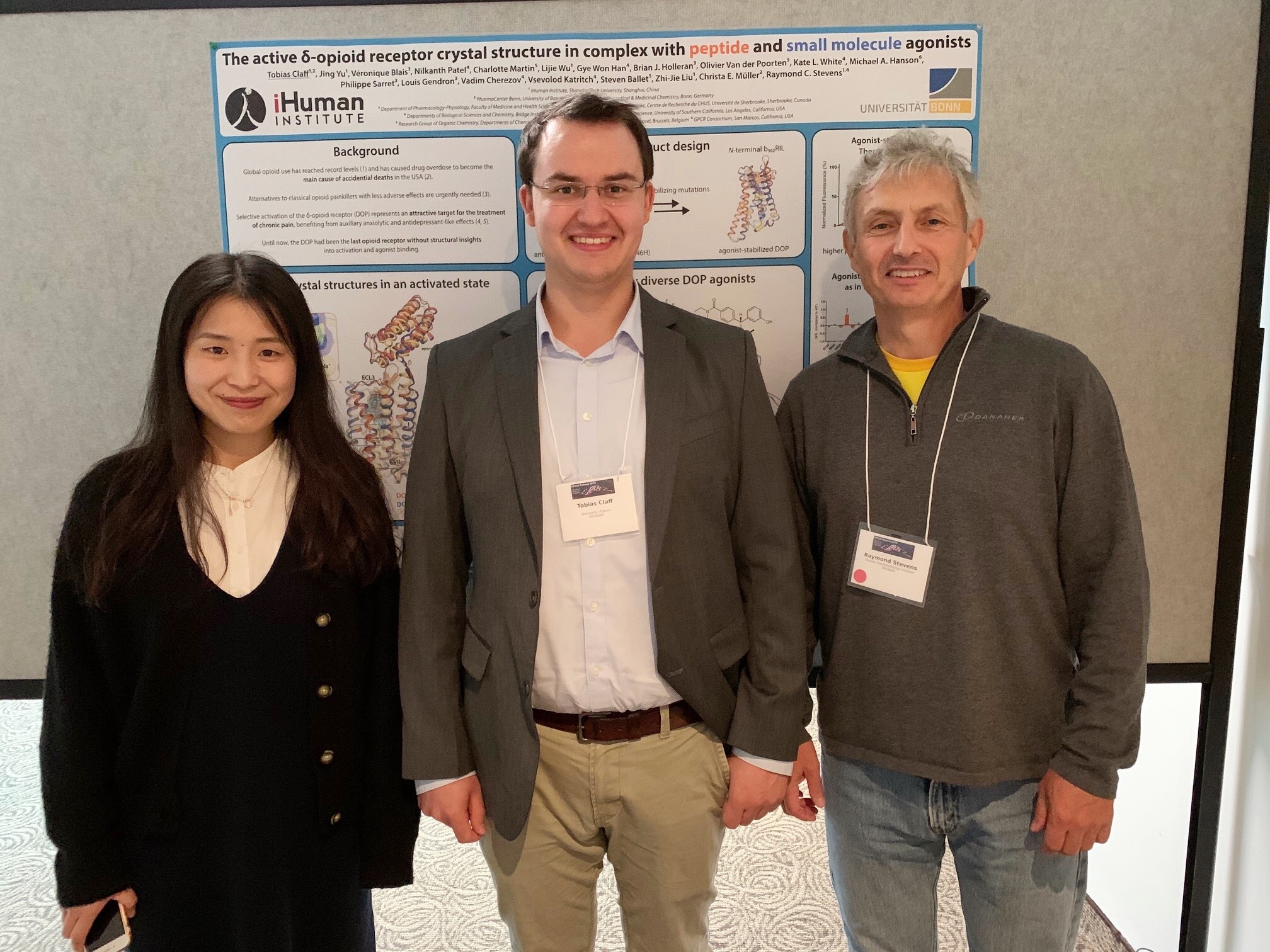iHuman Institute Professor Raymond C. Stevens and his team recently elucidated the first crystal structures of the δ-opioid receptor (DOP) in an activated state. The results were published in the journal Science Advances, in an article titled “Elucidating the active δ-opioid receptor crystal structure with peptide and small-molecule agonists.” ShanghaiTech University PhD student Yu Jing from Raymond C. Stevens' group and Bonn University PhD student Tobias Claff from Christa E. Müller group are the first authors. The results facilitate the development of a new painkiller.
DOP, a Class A G protein-coupled receptor (GPCR), plays an important role in the treatment of chronic pain. Opioids, such as morphine or oxycodone, are among the most effective painkillers available today. Many patients in the USA become addicted because of the prescription carelessness. The opioid receptor family includes three different subtypes: the μ- opioid receptor (MOP), the κ- opioid receptor (KOP) and DOP. The painkillers available to date mainly activated the MOP, but stimulating MOP has serious life-threatening side effects, including addiction. However, drugs that selectively bind to the DOP receptor probably do not have these side effects. In this study, the iHuman teams first solved two DOP structures with different molecules: agonist peptide KGCHM07 and agonist small molecule DPI-287, in 2.8 and 3.3 ![]() resolution respectively. The two structures with different scaffolds molecules provide the first atomic-level information about the DOP activation, which allows the determination of key factors for DOP selectivity and crucial differences between peptide and small-molecule recognition. These findings will be fundamental for structure-based drug discovery of DOP and development safer opioid painkillers.
resolution respectively. The two structures with different scaffolds molecules provide the first atomic-level information about the DOP activation, which allows the determination of key factors for DOP selectivity and crucial differences between peptide and small-molecule recognition. These findings will be fundamental for structure-based drug discovery of DOP and development safer opioid painkillers.
Tobias Claff, who carried out the majority of his experiments in the iHuman Institute, said “I spent 15 months at the iHuman Institute in Shanghai to acquire knowledge in the field of structural biology. The iHuman family was very welcoming and I soon felt included and appreciated by all colleagues. I was trained by specialists and was given the opportunity to work in well-equipped labs, both of which enabled me to solve two new crystal structures, such a positive outcome that I could never have imagined beforehand. When I was planning for my research stay abroad, I was thinking about different destinations and thanks to Ray who had convinced me to join iHuman, I got to spend over a year in an aspiring and innovative environment in China, a decision I will never regret.”

Read more at: https://advances.sciencemag.org/content/5/11/eaax9115

